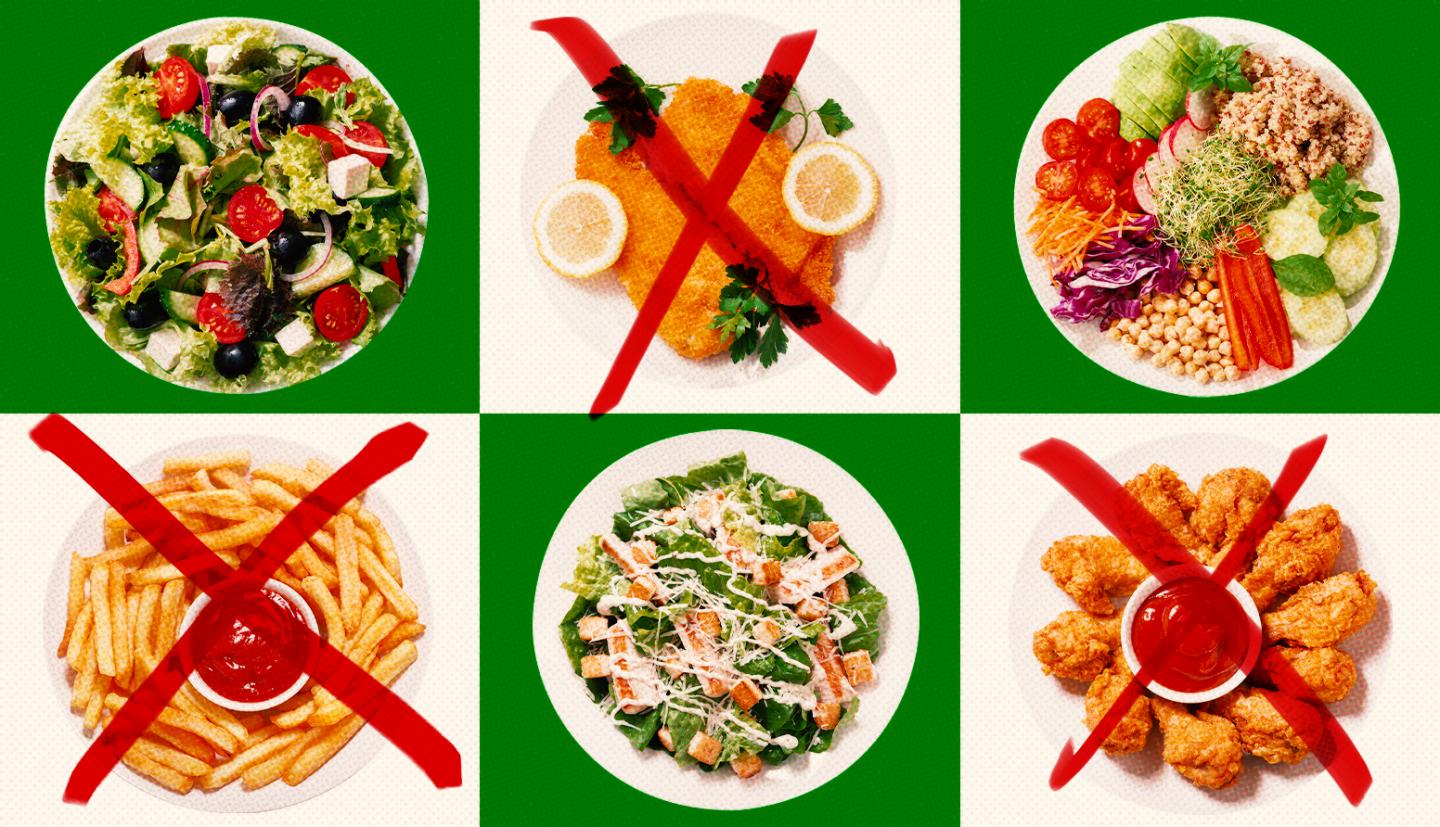4. Foods loaded with stealth salt
"Seventy-five percent of people over age 60 have high blood pressure. And even if you're on medication, you want to lower your sodium intake,” Rosenbloom says. If you think you're eating a low-salt diet because you don't salt your grilled corn or soup, think about that frozen pizza or canned soup you just heated up.
Those items are loaded with stealth salt, too. And the largest randomized clinical trial ever to look at the effects of reducing salt intake, published this year in The Lancet, found that lowering sodium led to improved symptoms like swelling, fatigue and coughing—and an overall better quality of life.
"Seventy-five percent of the salt in our diet comes from processed foods, not the salt shaker,” Rosenbloom says. So what can you do? An easy way to spot low-sodium foods, she notes, is to look for those in which sodium is 5 percent or less of the daily value; anything in the 20 percent range is high-sodium.
Bottom line: Aim for 1,500 to 2,300 milligrams of sodium per day.
Do this instead: Get back into the kitchen and cook, Allen advises, keeping the recipes simple, using whole ingredients and using seasonings that have no added sodium. “For example, have the fixin’s for a make-your-own-pizza using whole-wheat naan bread, pizza sauce, reduced-fat cheese, an assortment of veggies and lean meats,” she says. Rosenbloom recommends checking out the frozen “healthy” product lines that keep sodium down. “I’ve tried some of the newer product lines from Lean Cuisine,” she says, “and they are flavorful without as much sodium.”
5. Ultra-processed snacks
Unless you’re picking an apple from a tree or getting your milk straight out of a cow, most of the food you eat is processed. It’s the ultra-processed foods that make the list to strike from your diet. “Minimally processed foods like bagged greens, diced vegetables and nuts offer convenience,” Allen says. “And canned tomatoes and frozen fruit and vegetables are an excellent way to enjoy produce processed at peak quality and freshness.”But many ready-to-eat, processed foods, including cake mixes, snack chips, ketchup, sweetened yogurt and “meat lovers” frozen pizzas, add food coloring, sodium, preservatives and other hard-to-pronounce additives to make consumers happy. And that’s not good for you.Many processed foods are void of fiber and nutrients such as potassium or magnesium, and they tend to be calorically dense, with a lot of fat and salt, says Joseph Gonzales, a registered dietitian at the Mayo Clinic.“And some of the preservatives, like nitrates, may be harmful in high amounts, perhaps leading to premature aging of cells in the body,” Loepfe says.
Bottom line: Make label-reading a habit.
Do this instead: “You can’t go wrong with whole nuts, like pistachios in the shell or shelled almonds or peanuts,” Rosenbloom says. “And healthy cereal is a good snack for older adults because 93 percent of those over age 60 eat cereal with milk and fruit, so it’s a good way to boost nutrients.” Just watch for added sugars in cereals, even the “healthy” ones. Or reach for a hard-boiled egg. “When it comes to wholesome snacks, they are a naturally nutrient-rich choice,” Gorin says. “And the American Heart Association says healthy older adults can have up to two eggs per day as part of a heart-healthy diet.” Zeratsky suggests “the most wonderfully packaged to-go food: an apple, banana or orange.” Finally, Allen recommends making a charcuterie board with sliced lean turkey or chicken, whole wheat crackers, reduced-fat cheese, pumpkin seeds, almonds, dried apricots and cherries.
6. Alcohol
The days of triple-margarita Mexican dinners should be behind you. Why? “Alcohol metabolism changes when we age, and we become more susceptible to its negative aspects,” Loepfe says. “Alcohol can impact fall risk, interact with the medications we take as we age and lead to an increased risk of dehydration. Alcohol contributes to many health problems, including liver disease, heart disease, kidney disease, our immune system function and neurological diseases like dementia.” A recent University of Pennsylvania study of 36,000 adults found that even moderate levels of alcohol consumption — a few beers or a glass of wine per week — are linked to harm to the brain, no matter what your age. And if you think alcohol helps you get more or better sleep, think again. “While it may make it easier for us to fall asleep, it doesn’t usually help us stay asleep,” Allen says. “Frequently, it wakes us up in the middle of the night to visit the bathroom.”
Bottom line: Government guidelines recommend no more than two drinks a day for males and no more than one drink a day for females.
Do this instead: “There are so many low- or no-calorie alcohol options, and bartenders are creative with mocktails!” Rosenbloom says. “If you do consume alcohol, think about diluting it with sparkling water, club soda or low-calorie cranberry juice.” Hill’s suggestion: Try low- to no-sugar kombucha. “Kombucha has live bacteria to help support gut health, and it’s a healthier carbonated beverage than your typical soda.” For Zeratsky, one of the best alternatives is a flavored carbonated water or spritzer with a splash of fruit juice or muddled fruits such as raspberries, limes or oranges.
Editor’s note: This story was updated Jan. 12, 2024, with additional information.
































.jpg?crop=true&anchor=13,195&q=80&color=ffffffff&u=lywnjt&w=2008&h=1154)

































